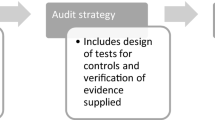Abstract
This study presents a procedure, called EICS (Enterprise IPPC Compatibility Study) aimed at evaluating, by means of the calculation of three indexes, the compliance of the processes performed in an industrial plant with the guidelines provided by BREFs (BAT References) Documents. In fact, according to European Directive 2010/75/EU (concerning the Integrated Pollution Prevention and Control and repealing European Directive 2008/01/EC), industrial plants must require authorizations to the competent authority stating the conformity of their activity, in order to obtain this conformity they are advised to Best Available Technologies (BAT). The aim of the BATs is to avoid or minimize the impact of an industrial activity on the environment through the prevention of the atmospheric emissions, wastewater discharge and energetic consumption, and the correct waste management thus improving the efficiency of the plant. The procedure shown in the present paper has been tested on several types of industrial plant (cement plants, secondary smelt foundries, paper-mill, and automotive industries as regards their paint lines). In this paper, the application of EICS method to a cement plant is presented: the obtained results highlight a good correlation between the index values and the real situation of the plant.


Similar content being viewed by others
Abbreviations
- IED:
-
Industrial EMISSIONS DIrective
- EICS:
-
Enterprise IPPC compatibility study
- BREFs:
-
BAT references
- BAT:
-
Best available techniques
- IPPC:
-
Integrated pollution prevention and control
- AW:
-
Activity weight
- AS:
-
Activity score
References
Bandura R (2008) A survey of composite indices measuring country performance: 2008 update, In: United Nations Development Programme Background Paper: Office of Development Studies, United Nations, New York
Cikankowitz A, Laforest V (2013) Using BAT performance as an evaluation method of techniques. J Clean Prod 42:141–158
Clerici N, Bodini A, Ferrarini A (2004) Sustainability at the local scale: defining highly aggregated indices for assessing environmental performance. The province of Reggio Emilia (Italy) as a case study. Environ Manag 34:590–608
Corvalán CF, Kjellström T, Smith KR (1999) Health, environment and sustainable development, identifying links and indicators to promote action. Epidemiology 10(5):656–660
Council Directive 96/61/EC of 24 September 1996 concerning integrated pollution prevention and control, Official Journal L 257, 10/10/1996, pp. 26 – 40
Daddi T, De Giacono MR, Testa F, Frey M, Iraldo F (2014) The effects of Integrated Pollution Prevention and Control (IPPC) regulation on company management and competitiveness. Bus Strategy Environ 23:520–533
Dasgupta S, Mody A, Roy S, Wheeler D (2001) Environmental regulation and development: a cross-country empirical analysis. Oxf Dev Stud 29(2):173–187
Directive 2010/75/EU of the European Parliament and of the Council of 24/11/2010 on Industrial Emissions (Integrated Pollution Preention and Control)
Dobbie M, Dail D (2013) Robustness and sensitivity of weighting and aggregation in constructing composite indices. Ecol Ind 29:270–277
European Directive 2008/01/EC of the European Parliament of the 15 January 2008 on Integrated Pollution Prevention and Control (IPPC)
García-Sánchez IM, Almeida NTA, Camara RPB (2015) A proposal for a composite index of environmental performance (CIEP) for countries. Ecol Ind 48:171–188
Geldermann J, Rentz O (2004) The reference installation approach for the techno-economic assessment of emission abatement options and the determination of BAT according to the IPPC-directive. J Clean Prod 12:389–402
Guidelines for the individuation and utilization of the Best Available Techniques (ex art. 3 subsection 2 of the D. Lgs. 372/99)—guidelines on the economical aspects and on the cross effects (in Italian, “Linee guida per l’individuazione e l’utilizzazione delle migliori tecniche disponibili (ex art. 3 comma 2 del D. Lgs. 372/99): Linee guida sugli aspetti economici e sugli effetti incrociati”), available on: <http://www.dsa.minambiente.it/default.aspx>. Accessed March 2009
Integrated Pollution Prevention and Control (IPPC) (2001) Reference document on best available techniques in the cement and lime manufacturing industries
Karavanas A, Chaloulakou A, Spyrellis N (2009) Evaluation of the implementation of best available techniques in IPPC context: an environmental performance indicators approach. J Clean Prod 17:480–486
Kortelainen M (2008) Dynamic environmental performance analysis: a Malmquist index approach. Ecol Ind 64(4):701–715
Laforest V (2014) Assessment of emerging and innovative techniques considering best available technique performances. Resour Conserv Recycl 92:11–24
Meadows D (1998) Indicators and information systems for sustainable development. The Sustainability Institute, Hartland
OECD (2008) Handbook on constructing composite indicators: methodology and user guide. OECD Publishing, Paris
Pragati Sharma, Prateek Sharma, Jain S, Kumar P (2013) An integrated statistical approach for evaluating the exceedence of criteria pollutants in the ambient air of megacity Delhi. Atmos Environ 70:7–17
Teodorescu M, Gaidau C (2008) Possible steps to follow for filling the gap between requirements and the real condition in tanneries. J Clean Prod 16:622–631
Testa F, Daddi T, De Giacono MR, Iraldo F, Frey M (2014) The effect of integrated pollution prevention and control regulation on facility performance. J Clean Prod 64:91–97
Walpole RE, Myers RH, Myers SL, Ye K (2007) Probability & statistics for engineers & scientists. Pearson Education International, Upper Saddle River
Acknowledgments
The authors gratefully acknowledge the Turin Province economic support to the research.
Author information
Authors and Affiliations
Corresponding author
Rights and permissions
About this article
Cite this article
Panepinto, D., Ruffino, B., Zanetti, M. et al. A Standardized Procedure for a Pre-evaluation of the IED Instance. Environmental Management 57, 847–855 (2016). https://doi.org/10.1007/s00267-016-0657-7
Received:
Accepted:
Published:
Issue Date:
DOI: https://doi.org/10.1007/s00267-016-0657-7




